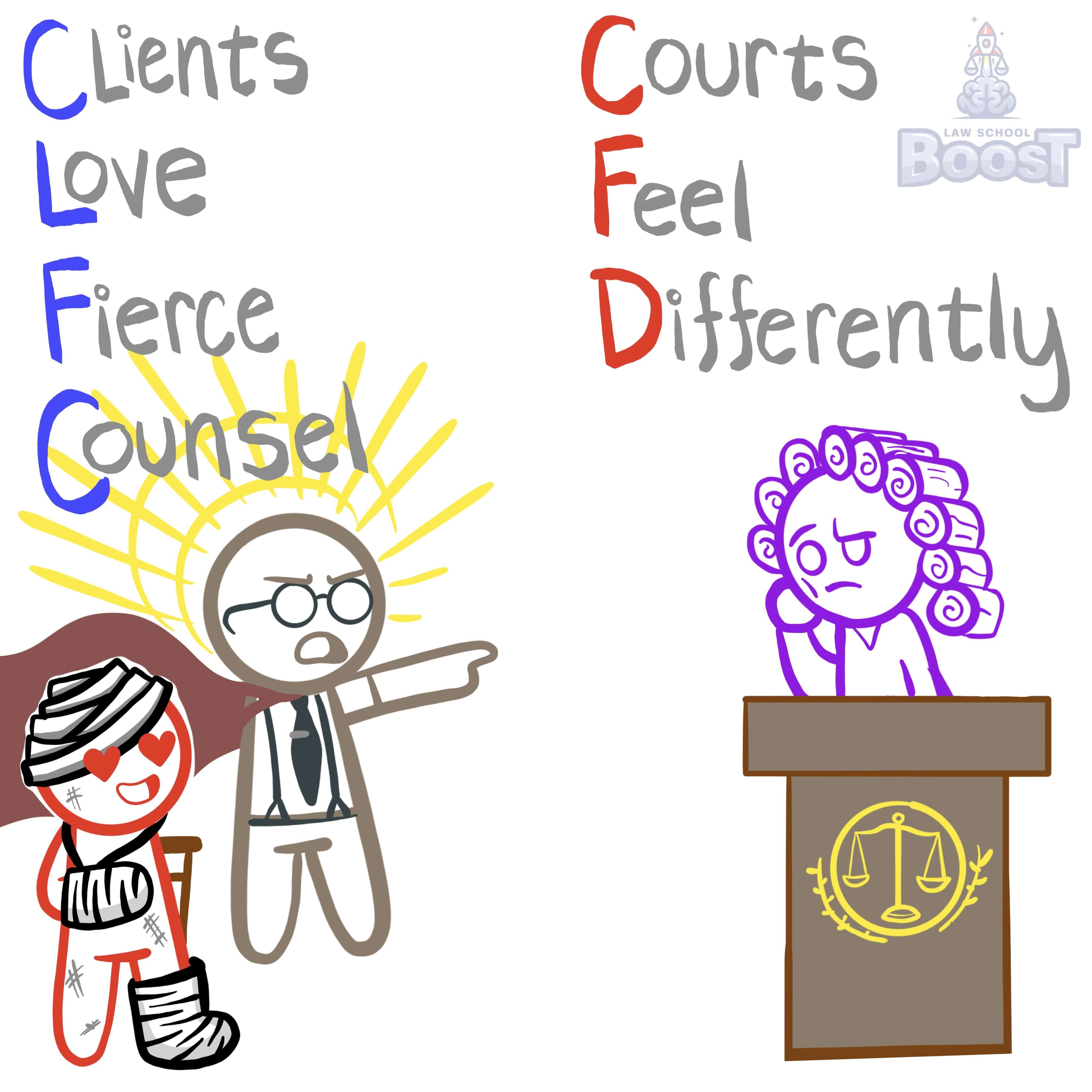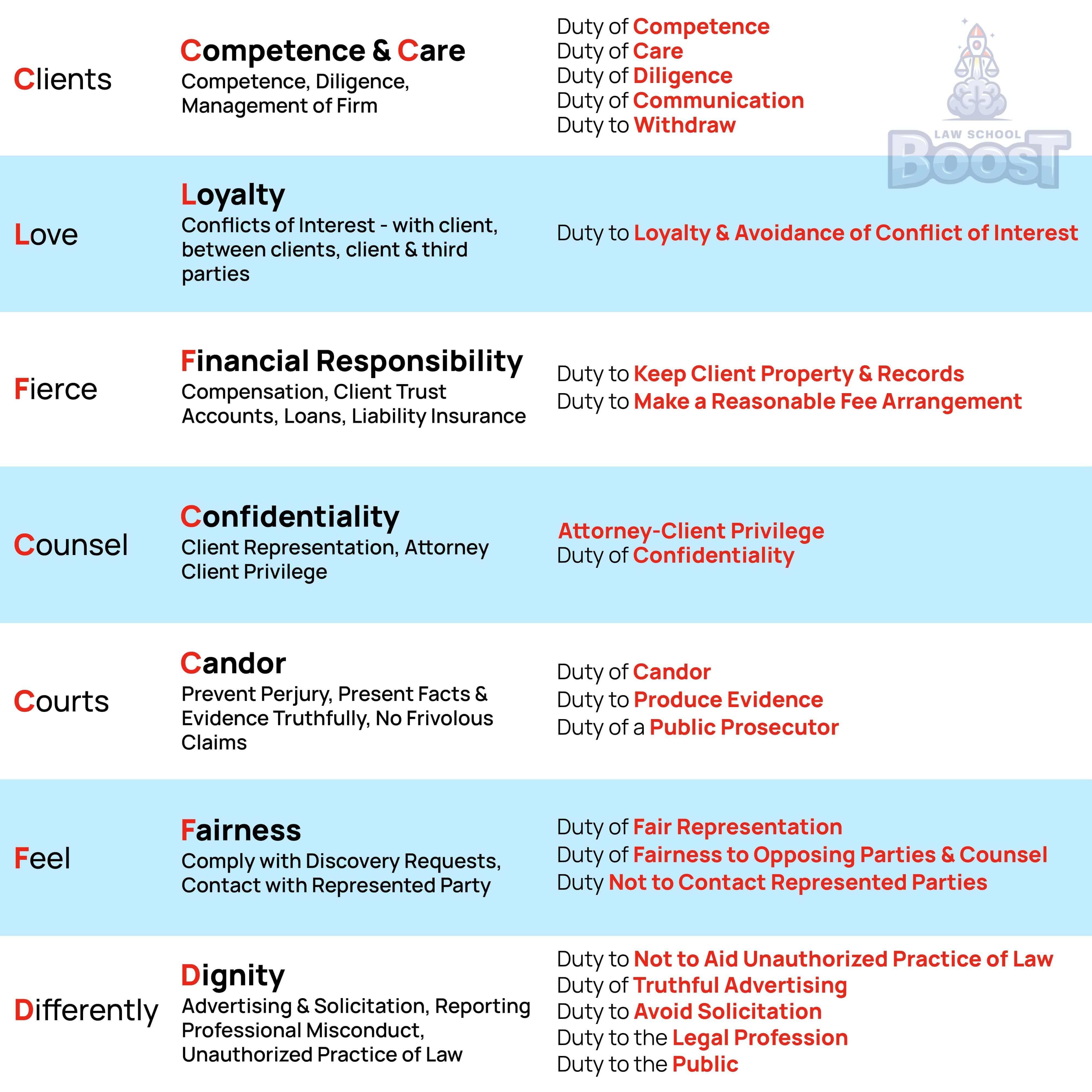‼️
Prof Responsibility • Loyalty
PR#021
Legal Definition
Under Rule 1.7(a), a concurrent conflict exists when the representation of a client will be directly adverse to the interest of another client, or there is a significant risk that the representation of one or more clients will be materially limited by the lawyer's responsibilities to another client, a former client, or a third person, or by a personal interest of the lawyer.
Plain English Explanation
First off, understanding the nuances between different types of conflicts is crucial. Two important concepts to distinguish are "concurrent conflicts" and "actual conflicts" (which you'll learn about in other cards).
An actual conflict occurs when a lawyer's representation of a client is directly and presently impaired by the lawyer's other interests or duties. This is a real, existing conflict that is currently affecting the lawyer's ability to represent the client. For example, if a lawyer is simultaneously representing two clients on opposite sides of a lawsuit, that's an actual conflict.
A concurrent conflict, on the other hand, is broader and includes both actual conflicts and potential conflicts. Under Rule 1.7(a), a concurrent conflict exists in two scenarios:
1. When representing one client would be directly adverse to another current client (which would be an actual conflict).
2. When there's a significant risk that representing one client will be materially limited by the lawyer's responsibilities to another client, a former client, a third person, or by the lawyer's own interests.
The key difference is that concurrent conflicts encompass not just present impairments (actual conflicts) but also significant risks of future impairment. This forward-looking aspect allows lawyers to identify and address potential problems before they become actual conflicts.
For instance, if a lawyer represents a corporation and is asked to also represent a shareholder in a separate matter, there might not be an actual conflict yet. However, it could be a concurrent conflict if there's a significant risk that the representations could become adverse in the future.
Concurrent conflicts can often be resolved with informed client consent, whereas actual conflicts typically require the lawyer to decline or withdraw from representation.
An actual conflict occurs when a lawyer's representation of a client is directly and presently impaired by the lawyer's other interests or duties. This is a real, existing conflict that is currently affecting the lawyer's ability to represent the client. For example, if a lawyer is simultaneously representing two clients on opposite sides of a lawsuit, that's an actual conflict.
A concurrent conflict, on the other hand, is broader and includes both actual conflicts and potential conflicts. Under Rule 1.7(a), a concurrent conflict exists in two scenarios:
1. When representing one client would be directly adverse to another current client (which would be an actual conflict).
2. When there's a significant risk that representing one client will be materially limited by the lawyer's responsibilities to another client, a former client, a third person, or by the lawyer's own interests.
The key difference is that concurrent conflicts encompass not just present impairments (actual conflicts) but also significant risks of future impairment. This forward-looking aspect allows lawyers to identify and address potential problems before they become actual conflicts.
For instance, if a lawyer represents a corporation and is asked to also represent a shareholder in a separate matter, there might not be an actual conflict yet. However, it could be a concurrent conflict if there's a significant risk that the representations could become adverse in the future.
Concurrent conflicts can often be resolved with informed client consent, whereas actual conflicts typically require the lawyer to decline or withdraw from representation.
Hypothetical
Hypo 1: Bob, a lawyer, is representing Sam in a personal injury lawsuit against a driver who hit Sam's car. The driver's insurance company, which is handling the defense, approaches Bob to represent them in an unrelated insurance fraud case. Result: This is a clear concurrent conflict under Rule 1.7(a). Representing the insurance company would be directly adverse to Sam's interests in the ongoing personal injury case. Bob must decline the insurance company's case unless both Sam and the insurance company give informed consent, and Bob reasonably believes he can competently represent both clients. Given the direct adversity, it would be very difficult for Bob to justify taking on both representations.
Hypo 2: Bob is representing Sam in a business dispute. During the case, Sam mentions he's considering investing in a new tech startup. Bob realizes his brother is the CEO of this startup, but he hasn't been involved in its operations. Result: This scenario presents a concurrent conflict under the second part of Rule 1.7(a). While there's no direct adversity, there's a significant risk that Bob's representation of Sam could be materially limited by Bob's personal interest (his relationship with his brother). Bob needs to disclose this connection to Sam and assess whether this personal interest creates a substantial risk of limiting his representation. If Bob believes he can represent Sam competently and loyally despite this connection, and Sam gives informed consent after full disclosure, Bob might be able to continue the representation.
Hypo 3: Bob is representing Sam in a contract negotiation with BigCorp. Bob's law firm has also been approached by BigCorp to handle their tax matters, which are unrelated to Sam's negotiation. Result: This situation potentially creates a concurrent conflict. While the matters are unrelated, there's a risk that Bob's firm's relationship with BigCorp could materially limit their representation of Sam. The firm might be tempted to be less aggressive in negotiations to maintain a good relationship with a potential big client. Bob needs to disclose this situation to Sam, and the firm needs to assess whether they can represent both clients without limitation. If they believe they can, and both Sam and BigCorp give informed consent, the dual representation might be possible.
Hypo 2: Bob is representing Sam in a business dispute. During the case, Sam mentions he's considering investing in a new tech startup. Bob realizes his brother is the CEO of this startup, but he hasn't been involved in its operations. Result: This scenario presents a concurrent conflict under the second part of Rule 1.7(a). While there's no direct adversity, there's a significant risk that Bob's representation of Sam could be materially limited by Bob's personal interest (his relationship with his brother). Bob needs to disclose this connection to Sam and assess whether this personal interest creates a substantial risk of limiting his representation. If Bob believes he can represent Sam competently and loyally despite this connection, and Sam gives informed consent after full disclosure, Bob might be able to continue the representation.
Hypo 3: Bob is representing Sam in a contract negotiation with BigCorp. Bob's law firm has also been approached by BigCorp to handle their tax matters, which are unrelated to Sam's negotiation. Result: This situation potentially creates a concurrent conflict. While the matters are unrelated, there's a risk that Bob's firm's relationship with BigCorp could materially limit their representation of Sam. The firm might be tempted to be less aggressive in negotiations to maintain a good relationship with a potential big client. Bob needs to disclose this situation to Sam, and the firm needs to assess whether they can represent both clients without limitation. If they believe they can, and both Sam and BigCorp give informed consent, the dual representation might be possible.
Visual Aids


Related Concepts
Are lawyers allowed to have sex with their clients?
Can an attorney continue to represent a client if a conflict exists?
Does representing clients with inconsistent positions violate the lawyer's Duty of Loyalty?
How can a lawyer limit their malpractice liability with a client?
How can screening avoid imputed conflicts?
How do the California rules differ from the ABA when it comes to a lawyer accepting compensation from a party other than their client?
In assessing the Duty of Loyalty, what's the difference between an actual conflict and a potential conflict?
In California, are lawyer's allowed to have sex with their clients?
In California, how can a lawyer limit their malpractice liability with a client?
In California, how must a lawyer advise their client to seek independent counsel when dealing with potential financial conflicts?
In California, may a lawyer represent an insurance company and its policyholder as joint clients?
In California, what are the restrictions related to lawyers acquiring the media rights of their clients?
In California, what are the restrictions related to lawyers receiving gifts from their clients?
In California, when may a lawyer loan money to a client?
What are some common issues that occur when a lawyer represents multiple clients in the same matter?
What are the most common types of conflicts of interest that involve a lawyer's own interest?
What are the restrictions related to lawyers acquiring the media rights of their clients?
What are the restrictions related to lawyers receiving gifts from their clients?
What is an imputed conflict and how can it be resolved?
What is required in order for a lawyer to accept compensation from a party other than their client?
What is required in order for a lawyer to avoid a financial conflict with a client?
What is the Duty of Loyalty?
When does the general rule of imputed conflicts NOT apply?
When may a lawyer appear as a witness in a matter where they represent a party?
When may a lawyer loan money to a client?
When may there be a conflict of interest with a former client?


